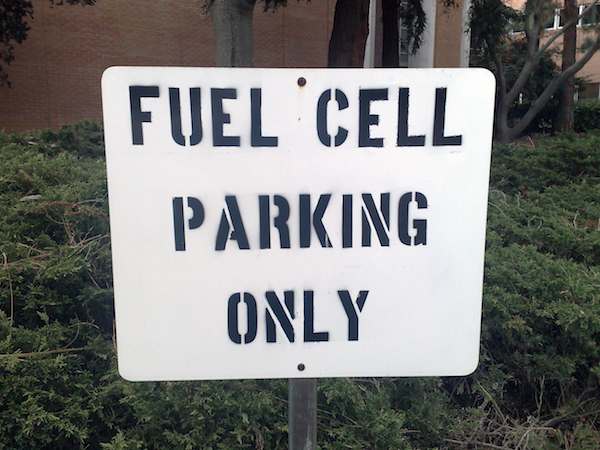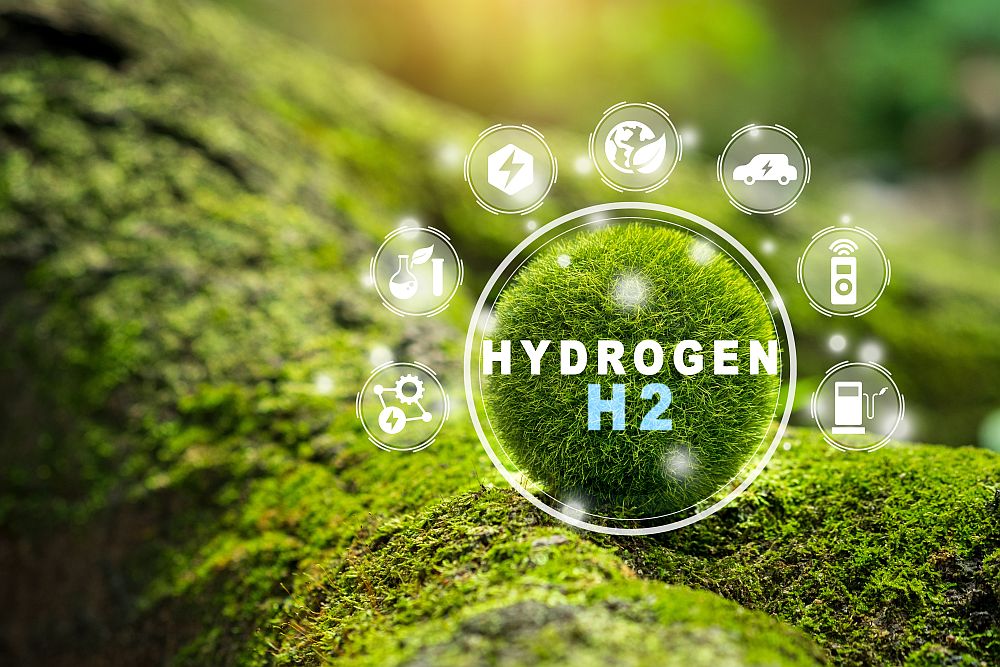
[Image above] Credit: Niall Kennedy; Flickr CC BY-NC 2.0
Fuel cells offer a lot of hope for a clean energy future.
As long as they’re fed a steady fuel source, fuel cells can generate continuous power sans the emissions, toxic byproducts, or undesirable outcomes that plague other power sources. And fuel cells can pack more power punch in a much more compact package.
There are many, many different types of potential fuel cells (check out this table for a quick comparison).
My favorite? Solid oxide fuel cells (SOFCs), which contain a ceramic material as the electrolyte. There’s even a version called the Bacon cell—mmmm—named for Francis Thomas Bacon, a British fuel cell pioneer from the early 20th century.
Because fuel cells are such an inspiring technology, they are a continual topic of innovation—for example, here, here, and here.
Researchers at Colorado School of Mines have now propelled that continual innovation even further with their latest report on a new ceramic material and production technique that holds big promise for our fuel cell-filled futures. Their results are published in Science.
Most SOFCs contain a yttria-stabilized zirconia (YSZ) membrane as their star ceramic. While YSZ has a lot of attributes in its pros column, it has one major con—it requires high temperatures (800–1000 °C) to operate efficiently.
Fuel cells with high operating temperatures require more energy input to achieve those temperatures and also require construction with more expensive heat-resistant materials. So there are several advantages to lowering operating temperatures of future fuel cells, including lowering their cost, too.
Alternative materials have arisen relatively recently to do just that, one of the most promising of which is yttrium-doped barium zirconate (BZY).
BZY membrane-containing fuel cells can operate at lower temperatures because they generate energy from the conduction of protons, specifically hydrogen ions, while conventional SOFCs rely upon oxygen ion conduction. Proton conduction through oxides has a lower activation energy, generally, than oxygen ion conduction.
That also means a difference in ion marching direction between these fuel cell types—protonic ceramic fuel cells (PCFCs) contain positively-charged hydrogen ions flowing towards the cathode, while SOFCs contain negatively-charged oxygen ions flowing towards the anode.
So there are fundamental differences between these technologies that hinder direct translation of advancements across the aisle. Despite the ability of BZY membranes to lower operating temperatures of fuel cells, these materials haven’t yet been able to generate comparable power levels.
“However, the high grain boundary resistance and fabrication challenges associated with this refractory material system have, until now, constrained its application,” the Science paper remarks about BZY membranes.
According to the paper, PCFCs haven’t lived up to their promise yet because of a lack of PCFC-specific cathodes and because of challenges fabricating the electrolytes.
The Colorado Mines team’s latest research solves both of those problems and demonstrates a prototype PCFC with good performance at a cool 350–500 °C and power densities of 100–445 mW/cm2. These are significant advancements—Science publication-significant—for this tech.
Conventional BZY membranes must be sintered at high temperatures of up to 1,700 °C to bind the ceramic components together. At those blistering temperatures, barium can vaporize, resulting in a heterogeneous composition in the final sintered ceramic membrane.
And, if that wasn’t bad enough, individual fabrication of the fuel cells’ layers creates interfacial weakness. So the Colorado Mines team instead pioneered a single step approach, using solid state reactive sintering to fire the full cell—anode, electrolyte, and cathode—all together.
The researchers also fabricated a new brand material to address some of the limitations of BZY. The team fashioned a perovskite cathode composed of a transition metal-doped derivative of BZY, BaCo0.4Fe0.4Zr0.1Y0.1O3-δ (BCFZY0.1).
Adding a copper oxide and nickel oxide “magic pixie dust” to the ceramic allowed the team to reduce that solid state reactive sintering temperature down to 1,450 °C. This new lower temperature is below barium’s vaporization point, meaning that the resulting membrane composition is much more homogeneous.
They tested the performance of the new cells compared to those created with conventional membrane materials. According to a Science news report, the researchers’ innovations allowed them to create cells with almost double the power of one hydrogen SOFC.
“Our work demonstrates a proton-conducting ceramic fuel cell that generates electricity off of either hydrogen or methane fuel and runs at much lower temperatures that conventional ceramic fuel cells,” senior author and Colorado Mines materials scientist Ryan O’Hayre says in a Colorado Mines press release. “We achieved this advance by developing a new air electrode for our fuel cell that is highly active even at lower temperatures because it is a triple-conducting electrode (it conducts electron holes, oxygen ions, and protons all at the same time) and we applied a relatively new fabrication method that greatly reduces the complexity and cost for the fuel cell fabrication.”
Combining the higher power with the lower operating temperature of just 500 °C might allow the new membrane to help bring fuel cells into more mainstream applications by significantly reducing their cost. The challenge—as usual—will be in scale up.
ACerS members Michael Sanders and Sandrine Ricote are also authors on the paper.
The paper is “Readily processed protonic ceramic fuel cells with high performance at low temperatures” (DOI: 10.1126/science.aab3987).
But, despite all the buzz, are fuel cells always a better alternative power option?
Not necessarily, according to the results of a new life cycle assessment of fuel cells’ environmental impact by researchers at the Swiss Federal Laboratories for Materials Science and Technology (EMPA).
Their analysis of the impact of using fuel cells to power homes and vehicles shows some surprising results—although home-powering fuel cells fare rather well, at their current point, the tech behind fuel cell-powered vehicles just isn’t up to snuff.
Because electricity is required to generate the hydrogen fuel needed to power vehicles, and electricity is again generated in the vehicle from the hydrogen, the efficiency of fuel cell vehicles is actually rather low. Per the EMPA team’s calculations, fuel cell-powered cars have an embarrassing overall environmental impact equal to that of a “luxury sports car with a gasoline consumption of 12.1 L/100 km,” the release states (12.1 L/100 km is equivalent to ~19.4 mpg). (Keep in mind that vehicle fuel cells are not SOFCs, but the point regarding the embodied energy of hydrogen fuel should still be considered in efficiency discussions.)
However, according to the analysis, if fuel cells could produce electricity from renewable energy sources—like solar, wind, or hydro—then fuel cell-powered vehicles could become efficient enough to outcompete gasoline- and electric-powered vehicles.
The key to the report is that it analyzes the current state of fuel cell systems—and that’s where progress in the science behind the tech comes into focus. In addition to the Colorado Mines team, other researchers also are making advancements to reduce fuel cell system costs and boost efficiency, including the innovation of platinum hollow nanocages to reduce the amount of costly metal catalyst required. Others are devising new entirely new catalyst materials to make reactions more efficient.
What do you think—will fuel cells fill our future?
Author
April Gocha
CTT Categories
- Energy
- Environment
- Material Innovations
- Thermal management


